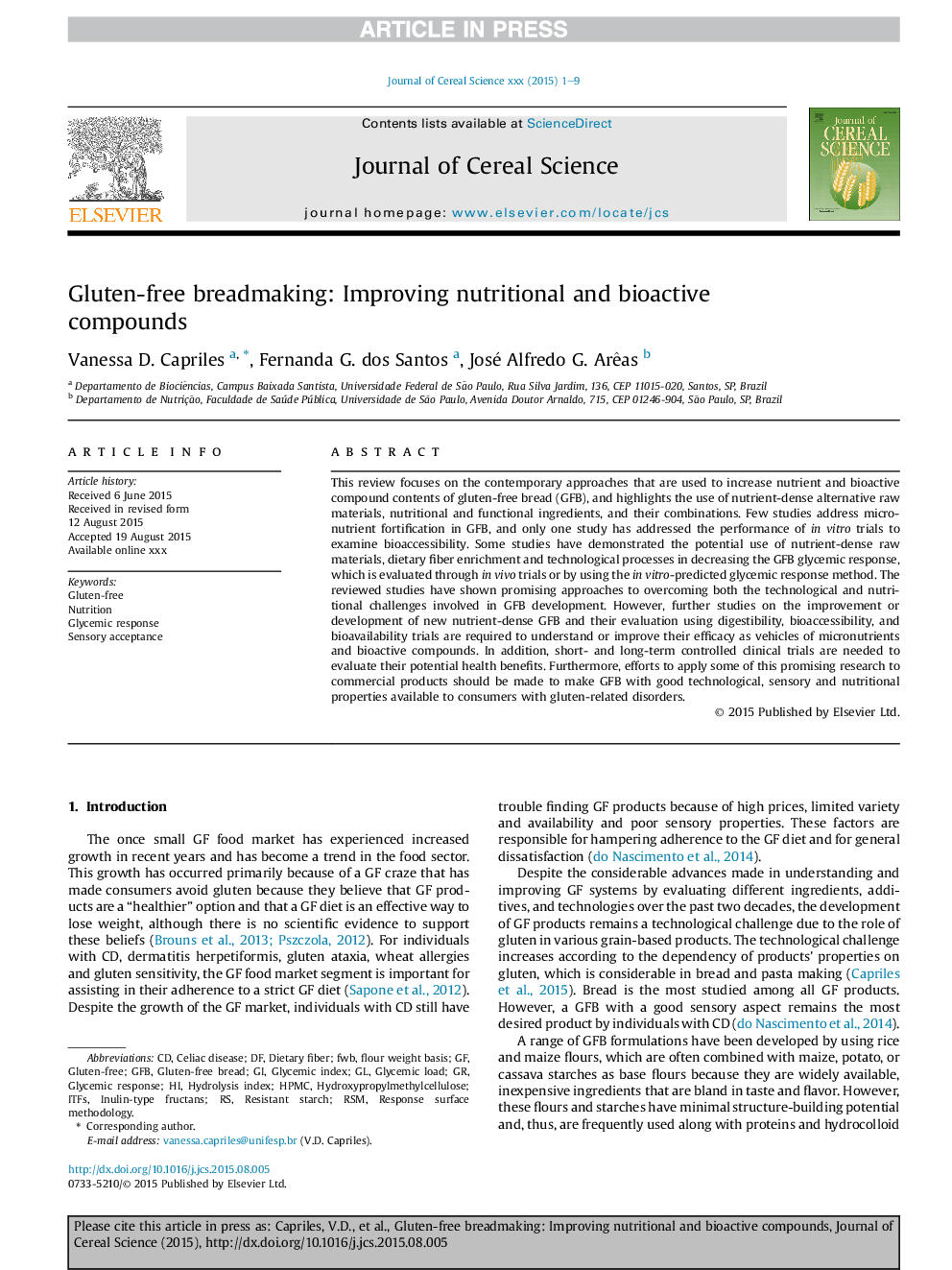| Article ID | Journal | Published Year | Pages | File Type |
|---|---|---|---|---|
| 6377754 | Journal of Cereal Science | 2016 | 9 Pages |
Abstract
This review focuses on the contemporary approaches that are used to increase nutrient and bioactive compound contents of gluten-free bread (GFB), and highlights the use of nutrient-dense alternative raw materials, nutritional and functional ingredients, and their combinations. Few studies address micronutrient fortification in GFB, and only one study has addressed the performance of in vitro trials to examine bioaccessibility. Some studies have demonstrated the potential use of nutrient-dense raw materials, dietary fiber enrichment and technological processes in decreasing the GFB glycemic response, which is evaluated through in vivo trials or by using the in vitro-predicted glycemic response method. The reviewed studies have shown promising approaches to overcoming both the technological and nutritional challenges involved in GFB development. However, further studies on the improvement or development of new nutrient-dense GFB and their evaluation using digestibility, bioaccessibility, and bioavailability trials are required to understand or improve their efficacy as vehicles of micronutrients and bioactive compounds. In addition, short- and long-term controlled clinical trials are needed to evaluate their potential health benefits. Furthermore, efforts to apply some of this promising research to commercial products should be made to make GFB with good technological, sensory and nutritional properties available to consumers with gluten-related disorders.
Keywords
Related Topics
Life Sciences
Agricultural and Biological Sciences
Agronomy and Crop Science
Authors
Vanessa D. Capriles, Fernanda G. dos Santos, José Alfredo G. Arêas,
